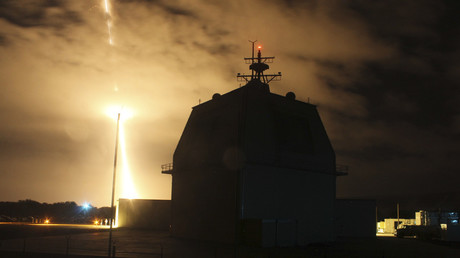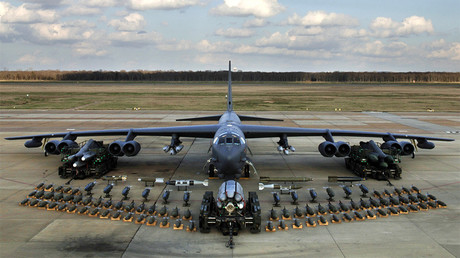What should competitive Fortnite look like?
Last weekend, Epic Games put forth its first true effort at official competitive Fortnite Battle Royale. It was a disaster.
The private hosts used for the tournament were about as laggy as could be, with pro players getting eliminated simply because they couldn’t move. This tournament was for a total prize of $250K. That’s big money, and big frustration for pro players who were essentially eliminated by the whims of the server gods. But on top of the lag, the whole thing was, well, boring. A cardinal sin in any sport.
The fact is that when you put 100 pro players in a lobby together and tell them that the last man standing wins, most of them will simply sit in a fort and stay safe as long as possible. This does not generate a whole lot of action.
And when there is action on the map, there was no way for a spectator to know about it. There are, after all, a hundred people to watch out for, and jumping from one engagement to another is not only difficult but lacks a certain narrative quality, making the whole thing feel scattered.
It seems clear that a guided mode or hotspot indicator would go a long way to improving the viewing experience. Being told where the fighting was or could be happening or having a guide that flagged these opportunities could work. There could also be a documentary-style concept that followed a few top players on their entire run, with the hope that they’ll find action and maybe even be pushed into conflict to impress viewers.
Epic recently published a post-mortem on the event, outlining ways that the publisher can improve on the tournament. They’ve also set forth the rules for this weekend’s event, proposing a score-based tournament where both eliminations and Victory Royales count toward players’ overall score. Whether or not this will incentivize more action will be determined following the event.
It’s also worth noting that Epic scheduled today’s event during the Fortnite Friday tournament. Fortnite Friday, hosted by popular YouTuber Keemstar and facilitated by UMG, was a $20,000 elimination-based tournament with top players. In this week of the Summer Skirmish Series, which is worth a total of $8 million, Epic is choosing to host a two-day tournament, effectively rendering Fortnite Friday playerless.
It doesn’t have to be this way, Epic. I know that the concept of 100 of the best players in the world dropping into one map sounds incredible. It does. It sounds great, in theory. But in practice, it’s just a disorderly live stream of a bunch of highly talented players sitting around in bases, or, worse, lagging to the point of being frozen.
And, an invitational tournament (that goes terribly wrong) doesn’t scream “inclusive,” which is what Epic repeatedly says competitive Fortnite should be.
There is another way, and it’s the same way that Fortnite players have been competing for months now. A kill race.
But let’s back up a bit.
What should competitive Fortnite be?
Right now, Fortnite is played by 100 people in a single lobby, and “winning” the game is defined by being the last survivor(s). This can be played in solo mode, with 100 individuals facing off against the storm and each other, or in 50 teams of two (Duos), or 25 teams of four (Squads).
Video games often get tweaks for the competitive scene, whether it’s limiting the resources/gear that players can use or reducing the number of maps that can be played. When skill level is that high, most games must make changes to allow for true competition.
Given it’s still early days, Fortnite Battle Royale featuring purely pro players simply hasn’t worked.
But as it stands now, there are roughly two schools of thought.
Whoever gets the most eliminations wins.
Pros:
- Super fun to watch
- Requires skill
- Inclusive to non-pro players
Cons:
- A lot of RNG
- More time-consuming
Gamebattle sites like CMG and UMG have been running minor tournaments for quite a while now using this format. Fortnite Friday, arguably one of the biggest weekly tournaments, also follows this format.
Here’s how it works: Individual players load up in a Duo match on the same team, or teams of two load up into a Squad match, also on the same team, and race for who can get the most kills in a public match.
This means that these opposing players can’t kill each other, but can keep track of each other’s kills and placement on the map. When you’re racing for kills, understanding where the other duo is fighting and how many kills they have is important information.
Given only four players are competing at a time, that means the rest of the 92 people on the map are regular Fortnite players.
This is where RNG comes into play. RNG is a term used in gaming that means Random Number Generator. It is the gaming equivalent of Alanis Morissette’s “Ironic.” It essentially means there is some level of random luck involved in the game. For example, you might land in a place where there is usually a weapon or chest, but that weapon or chest isn’t there, leaving you vulnerable to other players who land around you.
Great players can work around or overcome a certain level of RNG, but if the opposing team comes up on a squad of noobs and your team rolls up on a squad of great players, the tide of the match will inevitably shift against you, and may even result in a loss.
This is the cost of the 2v2 format that has become popularized with the vast majority of Fortnite competitive players.
While it takes more time to have 100 players compete four at a time, this format allows the viewer to watch no more than four players as they traverse the map and seek eliminations. At most, the audience has to follow along with four separate stories on the map. In most cases, duos play together, which brings that number down to two. In either case, it’s much easier than following along with the stories of 50 separate teams.
Traditional Battle Royale
Pros:
- Less RNG
- Amazing build fights
- Fair, in the sense that players are fighting players of equal skill level
Cons:
- It’s boring
- Not inclusive
- Confusing and scattered for viewers
This format was used during the Ninja Live tournament, the Fortnite ProAm tournament and, most recently, during the $8 million Summer Skirmish series, hosted by Epic Games.
Here’s how it works: 100 pro players/streamers pair off into teams of two and all load into the same lobby, with the goal of lasting the longest.
As I said, Fortnite Battle Royale is built around the idea that there would be a sole survivor, but doesn’t predicate that survival on a certain level of skill. In other words, it’s relatively easy to hide, avoid fights and survive to the near end of a game, or potentially even win. It doesn’t take much skill to squat in a bush or set traps in a house and sit in the bathroom.
Obviously, with pro players, there will be gunfights, and those gunfights should be pretty interesting. But they are few and far between, and are difficult to predict and capture for the live stream.
This also excludes regular players from being a part of the action. Yes, it’s a risk to construct a competitive scene on the backs of public gameplay. But it’s also never been done before in the pro gaming world. And it is the best way to include public players into the competitive scene. A regular player is far more likely to get interested in the competitive scene knowing that, on Friday or Saturday, they have the chance to play against the world’s greatest competitors.
The best way to build on the momentum of Fortnite’s popularity, as well as support the community as a whole, is to build out tournaments focused on eliminations within public lobbies.
It makes sense for Epic to want to control that experience, and it certainly makes sense for Epic to want the competitive scene to fit within the game they built, which is a Battle Royale. But thus far, competitive Battle Royale featuring purely pro players simply hasn’t worked. And it feels slightly underhanded for Epic to barrel over Fortnite Friday, given that the more competitive tournaments around Fortnite, the better for the game.
The community is here, telling you what it wants, Epic. And in true Fortnite fashion, if you build it, they will come.
Read more
July 20, 2018 at 11:53AM
from TechCrunch
via IFTTT




Post Comment
No comments